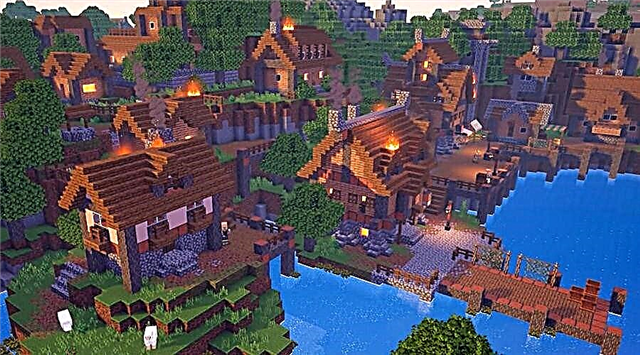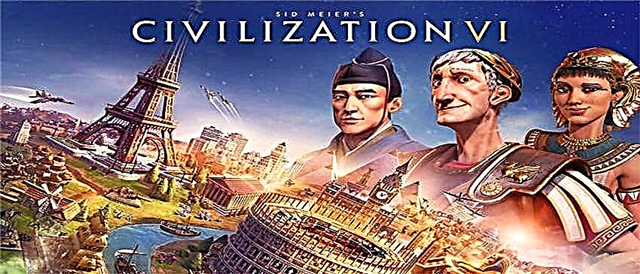
Check out the new Civilization 6 feature and its useful benefits. Something to grapple with in advance is Civilization 6 - a new feature in the series - to aid in both short-term decisions and long-term urban planning.
The concept of neighborhoods can be best described as “cities without a stack”; Where in previous Civilization games all buildings and wonders of the world were built inside a city that occupied one hex tile on the map, districts instead offer a visual representation of cities growing in size and stretching across your territory to occupy multiple tiles.
Sid Meier's Civilization VI, just like Sid Meier's Civilization V, demonstrates flexibility and expands capabilities. Let's dive deeper into how they work and how to make the most of them.
What are districts in Civilization 6 and how do they work?
There are 12 types of parishes available to create, their uses are varied and plentiful, so much so that you don't want to build every type of parish for each of your cities. Instead, it makes more sense to specialize based on a variety of factors.
Choosing which district to build and when will depend on any number of considerations, from your starting location and city location to whatever overarching victory goal you may decide to aim for. However, there are some basic things to be aware of in order to always make the right decisions.
 1. Your first district will be your city center. This starting area is not impressive, but it does give access to some of the main building types and grants bonuses of adjacency to other areas built next to it. The barn and monument built across the city center are very useful in the early stages to aid population growth and civil society research.
1. Your first district will be your city center. This starting area is not impressive, but it does give access to some of the main building types and grants bonuses of adjacency to other areas built next to it. The barn and monument built across the city center are very useful in the early stages to aid population growth and civil society research.
2. Prioritize creating districts that make sense for the type of game you want to play and the unique bonuses that your chosen leader and civilization provide. It doesn't make sense to turn every city into a dazzling cultural center if, for example, you intend to follow the path from the beginning.
3. Districts should not be built on top of bonus resources, as you will lose access to this resource; it is difficult to mine diamonds if you have built a sacred place where the mine should be.
4. While some areas are especially useful for specific circumstances to make the most of certain types of terrain or work for certain victory conditions, others are more general. The Entertainment Complex and, subsequently, the Neighborhood are good bets for their ability to keep your population happy (and therefore more productive) and to provide medium to late housing development to avoid barriers to city growth.
List of Civilization 6 districts and contiguity bonuses
Outside of the Downtown area, which you get once you've found a city, there are 12 unique neighborhoods available to build. Some civilizations have a special region that replaces the standard one; Greece boasts the Acropolis, which occupies the site of Theater Square, while England has a Royal Navy dockyard instead of a standard harbor, for example.
Typically, these specialized areas have additional bonuses, but may also have the additional requirement to be built on a specific type of terrain. The standard areas, what they offer at different points in the game and how to access them are listed here:
| District name | Traits | Profitability of citizens (per citizen) | Requirements | Opens | Adjacency Bonus |
| City center | Aircraft Capacity: 1 (after flight research) | N / A | Found city | Palace, Barn, Monument, Ancient walls, Watermill, Medieval walls, Renaissance walls, Sewerage | No (grants bonuses of contiguity with some other areas) |
| Holy place | +1 Great Prophet point per turn | +2 Faith | Astrology (Technician) | Temple, Temple, Wat, Pagoda, Cathedral, Gurdwara, Meeting House, Mosque, Synagogue | Faith bonus when placed next to: natural wonders, mountains, forests (for 2 tiles), other areas (for 2 districts) |
| Campus | +1 Great Scientist point per turn | +2 Science | Letter (Technology) | Library, university, research laboratory | Bonus Science when placed next to: Mountains, Rainforest (for 2 tiles), Other Areas (for 2 districts) |
| Camp | +1 Great Admiral point per turn | + 1 Culture +1 Production | Bronze work (technology); not near the city center | Barracks, Arsenal, Stables, Military Academy | N / A |
| Harbor | +1 Great Admiral point per turn | +2 Gold +1 Science | Heavenly navigation (technology); placement on coastal or lake tiles | Lighthouse, Shipyard, Seaport | Bonus Gold when placed next to: Coastal Resources, Other Areas (for 2 Districts) |
| Commercial center | +1 large trade point per turn | +4 Gold | Currency (Technology) | Market, Bank, Stock Exchange | Bonus gold when placed next to: rivers, harbor, other areas (for 2 areas) |
| Aqueduct | Provides fresh water | N / A | Engineering (Technology); City center; Freshwater / Mountain Tiles | N / A | N / A |
| theatre square | +1 point per turn aside: great writer, great artist, great musician | +2 Culture | Drama and Poetry (Civil) | Amphitheater, Art Museum, Archaeological Museum, Broadcast Center | Bonus Culture when placed next to: Miracles, Other areas (for 2 areas) |
| Entertainment center | +1 pleasure from entertainment | N / A | Games and Recreation (Civilian) | Arena, stadium, zoo | N / A |
| Industrial zone | +1 Great Engineer point per turn | +2 Production | Training (Technician) | Workshop, Factory, Power Plant | Bonus production when placed next to: Mines, Quarries, Other areas (for 2 areas) |
| Aerodrome | Aircraft Capacity: 4 | N / A | Flight (Technology) | Airport, Hanger, Units: Biplane, Bomber, Fighter, Jet Bomber, Jet Fighter | N / A |
| Neighborhood | +4 Accommodation | N / A | Urbanization (Civilian) | N / A | N / A |
| Space Port | Required for Science Victory | N / A | Rocket Engineering (Technology) | Science Victory Projects | N / A |
Other Tips to Know About Areas for Better Tile Placement
Primarily, districts are used to determine how your cities develop, inform how you want to play the game, and provide useful bonuses at every stage of your civilization's development.
While many districts receive contiguity bonuses, gain points for acquiring Great People, and make it easier to construct certain buildings, there are some useful things to consider when deciding where to place them that will help determine their long-term value.
1. Not all adjacency bonuses are created equal. A neighborhood that offers an adjacency bonus generates additional income depending on where it is in relation to other tiles. Some parish bonuses are more difficult to stack than others, so the Industrial Zone bonus for placing near a mine can be credited multiple times if placed next to multiple mines. The same applies to the Commercial Hub River bonus, which receives a bonus gold for every river tile it is connected to. Others are less helpful. The Holy Site's Natural Wonder bonus will appear less frequently simply because natural wonders are rare.In such cases, the highlands are often your friend, maintaining the performance of both holy sites and campuses, as well as offering natural defenses in case barbarians or an aggressive rival leader sniff around you.
2. Camps help turn defense into attack. If you find yourself too close for the comfort of a rival civilization or a few particularly active barbarian camps, then building a camp area is the perfect way to give your troops an edge. Starting experience boosts are useful for making your units more durable, and the fact that there is no adjacency bonus means the Camp can be embedded in another unwanted tile (although it cannot be built near your city center). What's more, if you later decide to do a bit of aggressive expansion, you can create higher tier reinforced troops to surprise the enemy. Just keep in mind that if you want to build a balanced army, you will need multiple camps to provide bonuses for both melee and mounted troops.
3. Be aware of the county's mutually exclusive benefits. As you can see by now, districts are a great way to personalize your cities and get some useful bonuses. However, it is important to know that some of their unique features require you to choose either / or not both. For example, the camp restriction mentioned above means that one camp cannot contain both melee barracks and horse stalls. Likewise, no Theater Square can boast of both an art and an archaeological museum. Hence, it is always worth spreading these mutually exclusive districts throughout your empire. If you decide to build several districts of the same type in different cities, make alternative choices to get the most benefit.











